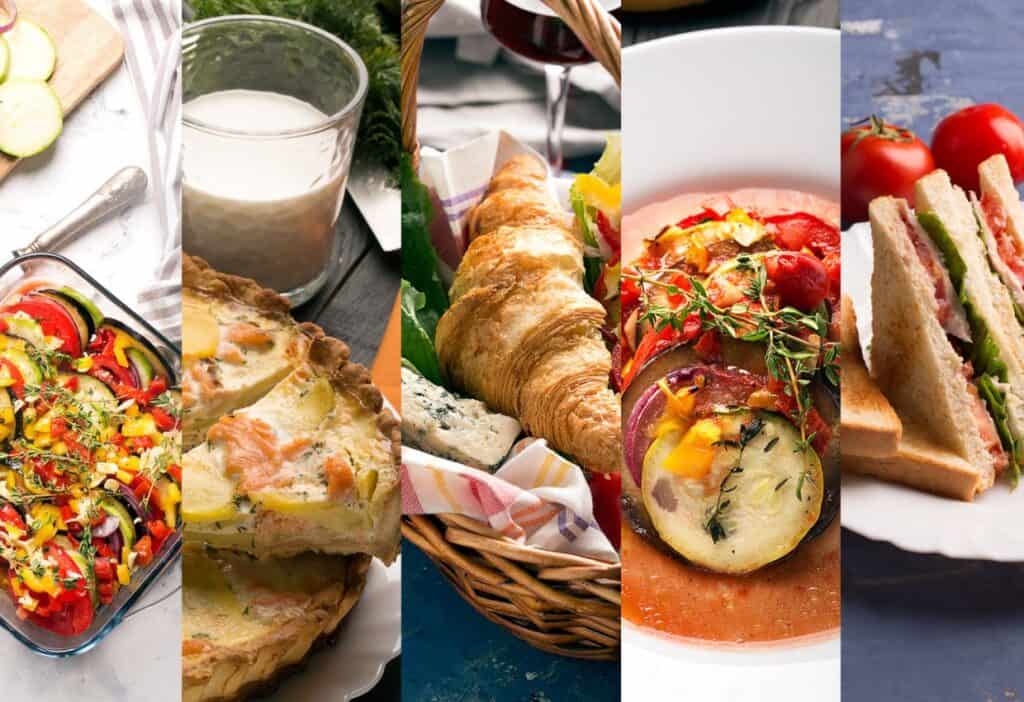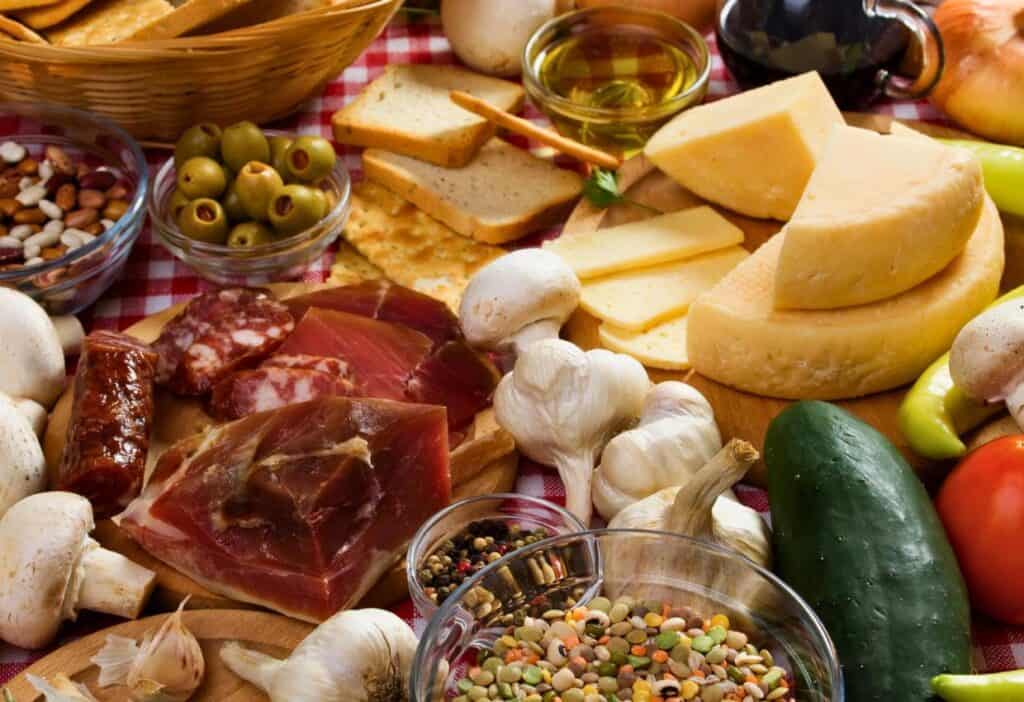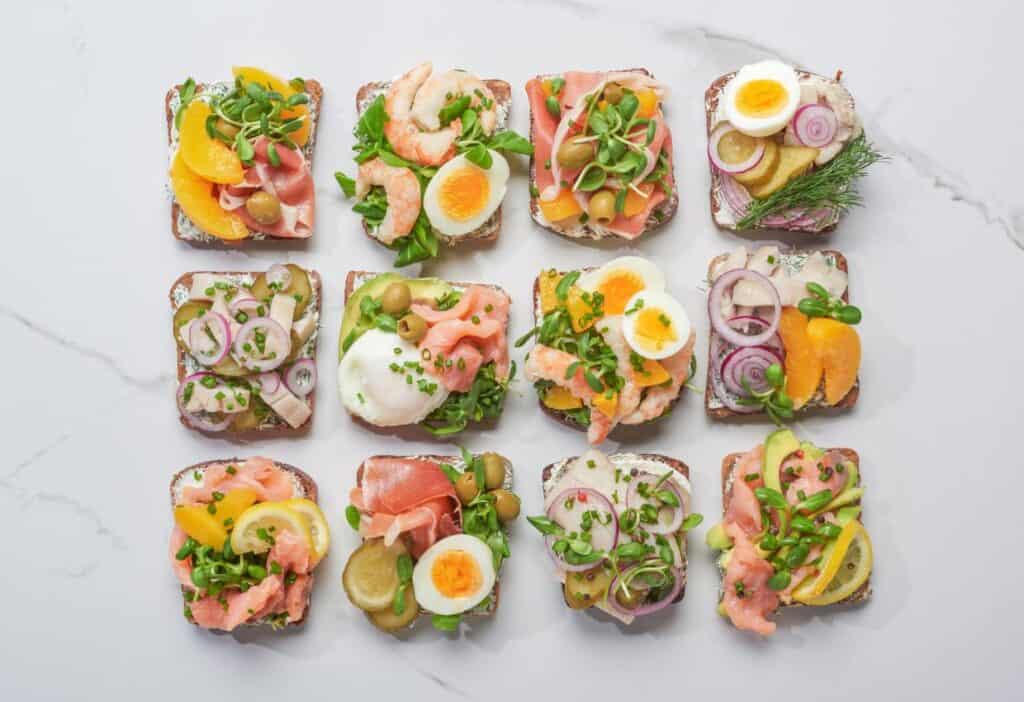European food is as diverse as it is delicious. From the sunny shores of the Mediterranean to the rocky outcrops of the Alps, European cuisines offer an array of flavors, ingredients and dishes with fascinating origins.

Europe is packed with a large variety of culinary offerings as diverse as its landscapes and cultures. From the hearty stews of Eastern Europe to the light and fresh dishes of coastal regions, European food is a celebration of flavors, textures and Europe’s rich cultural heritage. Whether you deem yourself a foodie or a curious traveler, European food promises an unforgettable experience.
Regional cuisines
Each unique region offers its own special flavors and techniques influenced by its cultural heritage. Learn more about the cuisines of each area below.
Southern Europe
Southern Europe encompasses countries like Italy, Spain, Greece, Croatia, Portugal, Turkey and southern France. This region is known for using fresh ingredients to create rather bold flavors. Italy, for example, is known for its rich pasta dishes, whereas Greece brings dishes like moussaka and gyros to the table.
Western Europe
The United Kingdom, Ireland, Iceland, Germany and Denmark are among the countries that make up Western Europe. This region is most well known for rich, hearty, comforting dishes. From the UK’s fried fish and chips to the more refined cuisine of northern France, there’s no shortage of diverse flavors on the Western front.
Northern Europe
Northern Europe includes Finland, Norway, Sweden and Estonia, to name a few. This region thrives on fresh seafood and fermented dishes, reflecting its coastal landscapes and traditions of food preservation. Specialties like Norway’s cured salmon dish, “gravlax,” and Sweden’s fermented herring dish, “surströmming,” encompass much of what this region has to offer.
Eastern Europe
Russia, Hungary, Serbia, Armenia, and Belarus are a few countries that encompass the Eastern region of Europe. Ingredients such as cabbage and beets, as well as warm soups, stews and casseroles, are frequently found in use in this region.
“I’m biased as I’m Armenian, but after traveling all over Europe, living in the US for 15 years and trying all types of cuisines, every summer, I travel back to my country with a great anticipation of feasting on our flavorful food. Armenia’s mountainous landscape and strong summer sun result in the juiciest vegetables and fruits that make Armenian cuisine — stews in particular — full of flavor like nowhere else.”
— Tamara Tsaturyan, Thriving In Parenting

Common ingredients
Some ingredients are absolute staples across most European cuisines. Here are some of the most commonly found ones.
- Olive oil: Popular in the Mediterranean regions, olive oil can be found in everything from fresh salads and dressings to baked goods such as focaccia or
pizza . Spain is the largest producer of olive oil in the world. - Bread: From French baguettes to German rye bread, bread is undoubtedly a staple in European food. Each region has its unique variety of bread based on the locally available grains.
- Cheese: From Italian parmesan and Dutch gouda to Greek feta and French brie, every region of Europe offers a delicious addition to the world of cheese. These cheeses are key ingredients in many European staples, such as French quiche, Italian lasagna and Greek spanakopita.
- Seafood: Many European countries have coastlines where seafood is plentiful and a large part of the cuisine. Fish, shellfish and mollusks are widespread in Spain, Italy, Greece, Portugal, Belgium, Norway and Iceland.
- Herbs: Both fresh and dried herbs are cornerstones of many European dishes. From the fresh dill common in many Scandinavian dishes such as pickled fish to the dried French spice blend “herbes de Provence,” which includes thyme, rosemary and lavender, herbs are essential in flavoring European cuisines.
Iconic dishes and their origins
There are too many beautiful dishes throughout Europe to go into every single one, but here’s a small sample of some standout dishes in European cuisine.
- Pizza: With its origins in Naples, Italy,
pizza is known worldwide for its delicious combination of dough, sauce and cheese. - Paella: A Spanish cuisine staple, paella is a rice dish commonly made with seafood, chicken and saffron.
- Fish and chips: This British classic consists of crispy fried fish served alongside fries.
- Goulash: Goulash is a rich Hungarian stew flavored with paprika.
- Croissant: This flaky French pastry consists of layers of buttered dough that bake up crisp and golden.
- Borscht: This Eastern European soup is made with rich, earthy beetroot and served with a healthy dollop of sour cream.
- Smørrebrød: These Danish open-faced sandwiches consist of buttered rye bread served with nearly any variety of tasty toppings.
- Moussaka: This classic Greek dish is a layered casserole dish commonly made with eggplant, ground meat and creamy bechamel sauce.
- Patat: A Dutch street food staple consisting of thick-cut french fries served in a paper cone with a dollop of mayonnaise, ketchup or peanut sauce.
- Pierogies: Pierogies are Polish dumplings made of dough wrapped around a savory or sweet filling that is then boiled.
- Haggis: Haggis is Scotland’s national dish. It consists of a mixture of sheep liver, heart and lungs, spices and oatmeal stuffed in an animal casing and then boiled.

Modern trends
Here are some modern trends in the food world that have made their way throughout Europe.
Farm to table
The farm-to-table movement, which focuses on locally sourced ingredients, has gained momentum throughout Europe. Many chefs in European restaurants prioritize local, seasonal produce and build their menus around these ingredients.
Plant-based eating
The rise in vegan and vegetarian diets has made its impact on European cuisine. While European food is well known for its hearty use of game meats and seafood, health-conscious movements have brought greater attention to the produce, grains and legumes plentiful in European cuisines.
Final thoughts
As you can see, the many faces of European food greatly reflect the diverse cultures and natural resources found throughout the European countries. Whether you crave comfort food classics like
Kristen Wood is a photographer, writer, world traveler, and creator of the blog Foodventures Abroad, where food and travel intertwine. She is also the author of Vegetarian Family Cookbook, Fermented Hot Sauce Cookbook, and Hot Sauce Cookbook for Beginners. Her work has been featured in various online and print publications, including Forbes, Chicago Sun-Times, Elle, Martha Stewart, Yoga Journal and more.